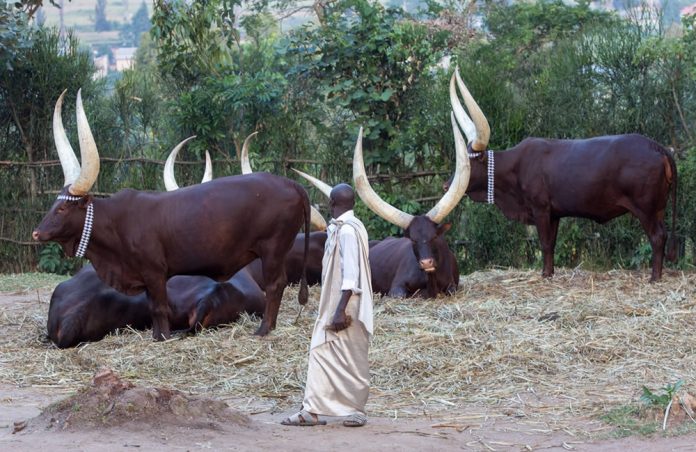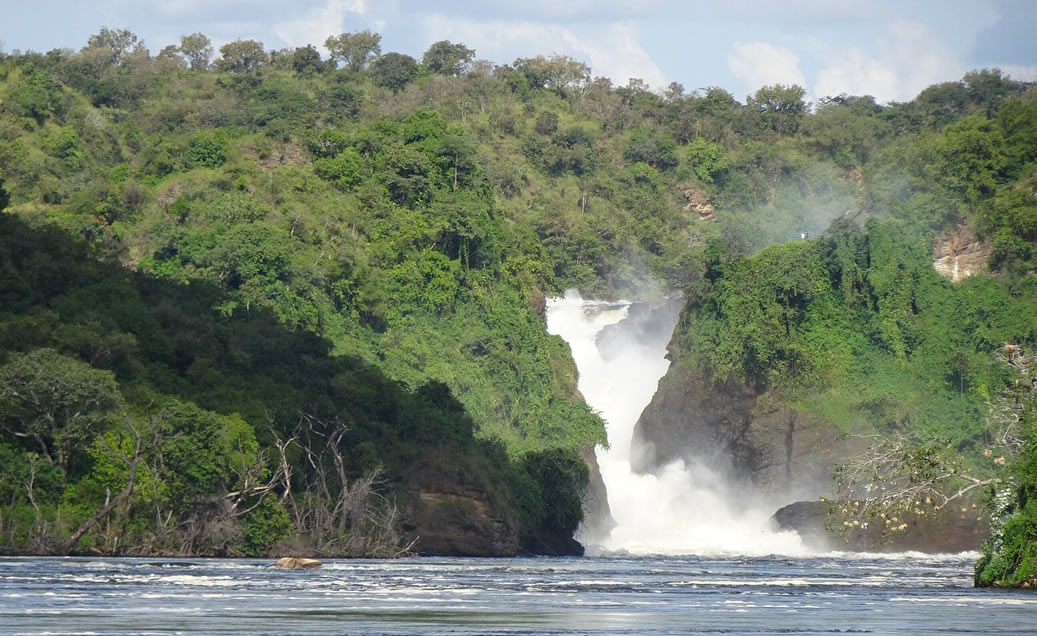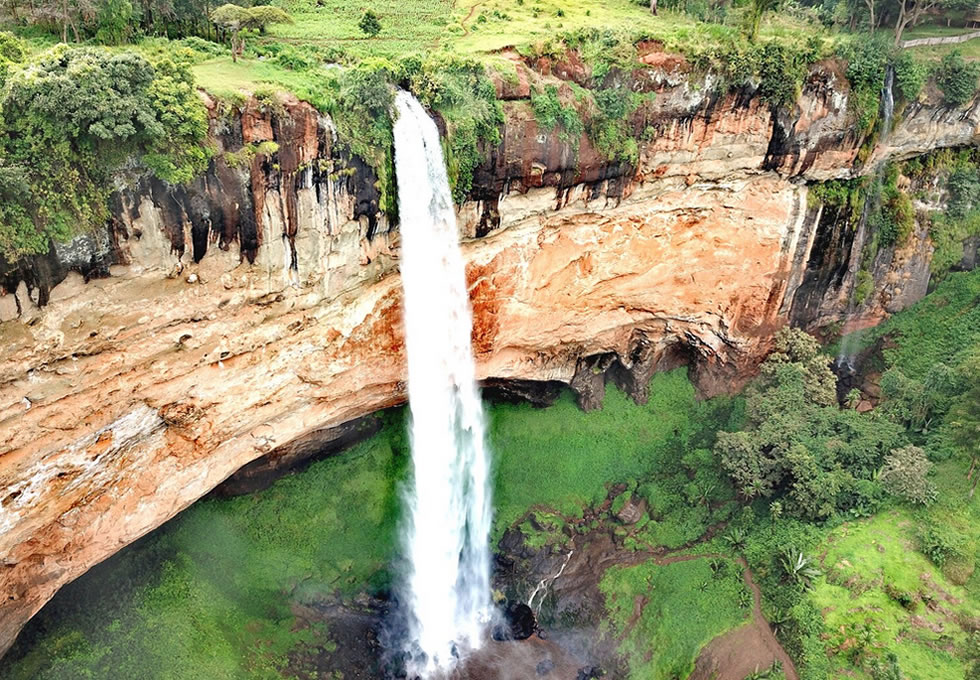Ankole is a region rich in cultural heritage. Unique dishes, language, folklore, you can name them, it’s all there.
Originally known as ‘Kaaro-karungi’ loosely translated as ‘beautiful village.’ the area is inhabited by the Banyankole – a Bantu group. They inhabit the present districts of Mbarara, Kiruhura, Isingiro, Ibanda, Bushenyi, Sheema, Rubirizi, Buhweju, Mitooma and Ntungamo in western Uganda.
Today, Ankole’s cultural heritage is fast fading. What remains is in tales and a few traditional ceremonies. But not all is lost. Igongo Cultural Museum, the biggest in Western Uganda, is preserving the Nkole culture through various artifacts.
Located 15 minutes away from Mbarara Town at Biharwe Trading Centre, the museum has become a leading tourist destination. With many legendary artifacts safely tucked away in transparent glass rooms, one is ushered into the rich Ankole heritage.
The name Igongo is itself of historical importance. It is derived from Igongo hill found in Rwenjeru village in Mbarara District. It is said that during the reign of King Ntare – which was between 1587 to 1615 – floods in Ankole Kingdom claimed thousands of people and livestock. King Ntare was compelled to seek divine intervention.
The diviner ordered that a white spotless cow (ente njeru) be slaughtered and the rituals were performed at Igongo hill. Miraculously, it is said, the water reduced and collected to form present day Lake Mburo. Pleased, the king named one of those.
A sculpture showing a traditional Ankole bride wearing beads
His sons Kasasira (the forgiver). Kasasira also later ruled Ankole from 1615 – 1643. Since then, Igongo hill became an important aspect of Ankole culture. It’s no wonder the museum is named after it. The museum has different sections of historical importance including: Social stratification Here one learns that Ankole society was/is stratified into Bahima (pastoralists) and the Bairu (agriculturalists).
A caste-like system of the Bahima over the Bairu existed. There was a general belief that a hoe is what made a mwiru (singular Bairu) what he is. Similarly, the Bahima were identified with cattle. This kind of belief was not very accurate because merely acquiring cows would not transform one from a Mwiru into a Muhima. Nor would the loss of cows transform a Muhima into a Mwiru – this is very common currently as some Bahima have taken on digging and Bairu own cattle. Because of the different way of life, even their homes looked different.
Marriage There is a lot to learn about marriage in Ankole – from the function to the beliefs that marriage is a sacred affair. The bride was expected to be a virgin until the night she is deflowered by her husband. If the parents of the girl were aware that their daughter was not a virgin, they would formally communicate to the husband by giving the girl – among the other gifts – a perforated coin or another hollow object, in most times a cloth. A bride was also meant to dress differently from the everyday way of dressing and jewelry.
There was and still is a function called okuhingira (giveaway) which is the day a woman/bride is officially handed over to the boy’s family. Among the gifts a bride would take would be Omugamba. The Omugamba would contain various calabashes that a bride would use in her new home. It is still the case today. War Often, the kingdom of Ankole was at war with the neighbouring states. Sometimes there would be raiding expeditions to Buhweju Kingdom and Karagwe in Tanzania. The Banyankole weapons comprised of spears, arrows and shields. The Royal Regalia The royal regalia of Ankole consisted of a spear and drums.
The main instrument of power was the royal drum called Bagyendanwa. This drum was believed to have been made by Wamala, the last Muchwezi ruler. It was only beaten at the installation of a new King and had its special hut. It was considered taboo to shut the hut. A fire was always kept burning for Bagyendanwa and this fire could only be extinguished in the event of the death of the King.
The drum had its own cows and some other attendant drums namely; kabembura, Nyakashija, eigura, kooma and Njeru ya Buremba. Communication You will learn that the Banyankole had several forms f communication for different functions. If one brewed local beer, they would inform others by hanging a coil made from banana leaves at the road to their homestead. Whoever saw it would know there is beer in that home. To call for a meeting, the messenger would blow a trumpet locally known as enzamba or a drum.
Handwork was an important aspect of Ankole. It was through handwork such as carpentry, iron smelting, pottery, weaving, as well as making leather products that people got the different items for use in day to day life. For instance the milk pots (ebyanzi), emikarabanda (wooden sandals) were carved out of wood. Spears, knives, needles for weaving were all from iron smelting. Baskets, stretchers for carrying brides and sick people were woven.
Cultural Villages
Outside the Museum is the cultural village. This exhibits the ways of life of the two different Ankole castes – the Bairu and Bahiima. You are ushered into how they lived, stored food and the general arrangement of the interior of their house. A Muhima house, for instance, has a designated corner called Orugege. Here milk pots, calabashes to churn yoghurt and ghee as well as entsimbo – the special calabash for storing ghee, would be kept under strict hygienic conditions. In a mwiru house, there had to be obugamba – a rack made from tree stems where food and firewood would be kept. It was usually above the cooking stones.
Not only does Ankole have a rich culture, the region also has unique dishes one will not find anywhere else. One of the most important food is Eshabwe. This is made from cow ghee which is mixed with rock salt and water. It is often served with karo (millet bread) and matooke (bananas).
Another important Ankole food is Karo (millet bread). This is got from mingling millet flour. It is served in special baskets known as endiiro. This was formerly the staple food of the Banyankole until matooke infiltrated the region.
Enkuru is a special sauce got from cow skins (oruhu). After drying the skin, you peel the inside and the meat-looking pieces you get are dried and later boiled and mixed with ghee and hot water. It can also be served with eshabwe.










